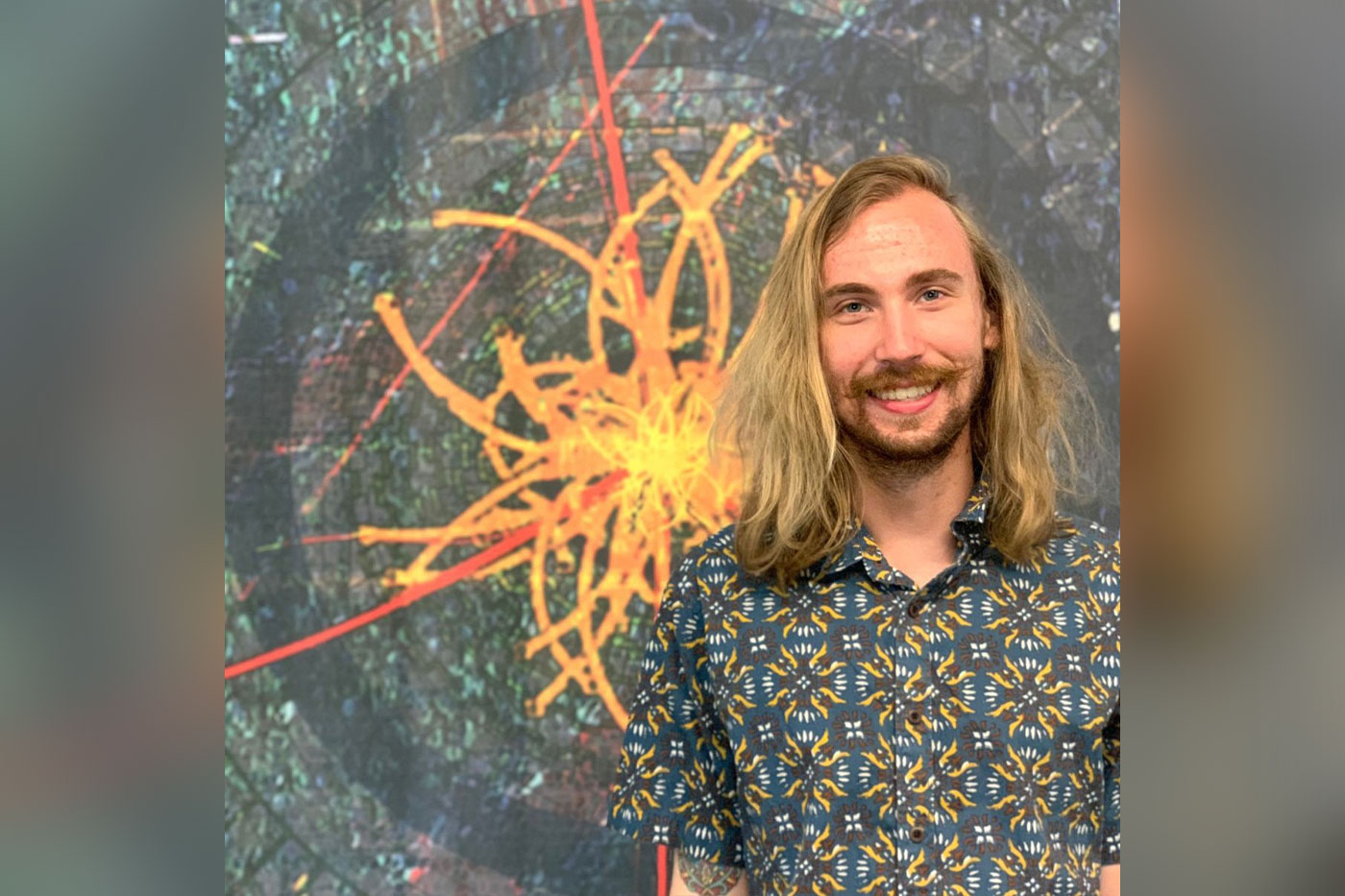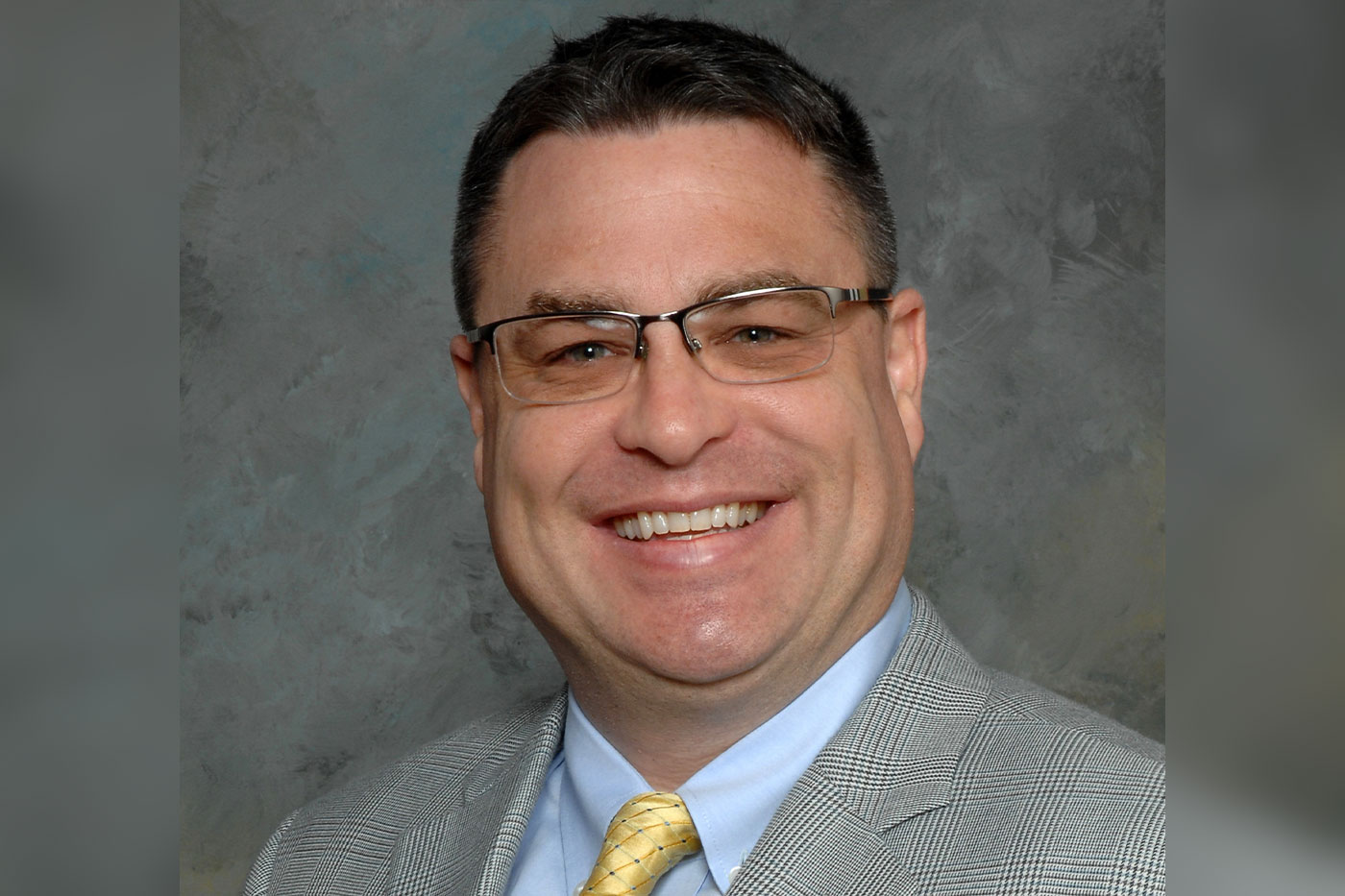The latest full volume of a distinguished journal in quantum physics featured a paper written by a Texas Tech professor and graduate student.
Quantum computing, with the potential to be much more powerful than classical computers and can solve increasingly complex issues, is surging as an option to be used in the science and technology fields.
But more research needs to be completed before quantum computing can become an everyday tool.
In fall 2024, that idea came closer to realization with the publication of “Quantum Wire Coupled to Light” in the highly respected journal PRX Quantum. The paper was written by Victor Bradley, a graduate student at Texas Tech University, Wade DeGottardi, a Department of Physics & Astronomy professor, and others.
The culmination of a three-year effort, Bradley said seeing the paper published was a huge relief after enduring an extensive appeals process, which took longer than the period of completing the original research. Other options were available, such as splitting all the information into separate, smaller papers, but the group stood behind the potential of what they’d initially set out to accomplish.
“My decision to stay at Texas Tech for my doctorate led us to say, ‘What if we can develop this into something more? This is a big idea,’” Bradley said. “After that, we had a road map of where this project could specifically develop into, and that’s one of the reasons we fought so hard for it to actually get into one of these newer, very high impact journals.”
The group investigated the behaviors of quantum wire, such as nanotubes that confine an intermediate number of electrons to moving on a single axis, by introducing small particles of electromagnetic radiation and light (photons) and observing the electrons’ reactions.
Evidence of a linear system in which one photon was introduced and one photon eventually left the quantum wire remained, but as the number of units of energy increased, so did the possibilities of the electrons’ reactions within the wire.
Decay also occurred faster than researchers initially thought, as an example of superradiance. During the research process, they were able to generate a method to replicate Dicke-model physics, an older, popular model relevant to quantum technology, but in a simpler fashion.
A Growing Interest
Years ago, Bradley wouldn’t have expected to be pursuing high-level physics knowledge in college, though he had plenty of experience in the subject.

For high school, he attended the Science Academy of South Texas in the Rio Grande Valley, where he took multiple Advanced Placement courses on physics. Bradley noted those classes revitalized his interest in school, and when he developed carpal tunnel from playing the bass and had to put his love for music aside, physics became his future.
It was a full-circle development for Bradley, who had loved fixing nonfunctional devices and taking things apart as a child.
He came to Texas Tech to study astrophysics but quickly realized it wasn’t the path for him. Still in the physics program but without a sense of what to focus on, Bradley took a class of DeGottardi’s in his junior year and was intrigued by DeGottardi’s research interest in condensed matter theory.
Condensed matter theory involves researching an intermediate number of particles and the anomalous behaviors that occur.
Bradley was also drawn in by how approachable DeGottardi was, with the professor having a reputation for seeking out students to counsel and getting lunch with students. After the first day of class in which DeGottardi mentioned his research, Bradley asked if the two of them could meet another time and discuss the subject.
DeGottardi was overjoyed, although Bradley was apprehensive.
“I was so nervous,” Bradley recalled. “I was ready to be cross-examined about what I know about physics, but we just had a regular conversation. He asked me about the stuff I was interested in and without realizing it, by the end of it, we had come up with doing this project in a very vague sense.”
Bradley had mentioned the other major he was pursuing simultaneously, math, and his affinity for the abstract algebra course that presented the concept of group theory. Group theory is the study of systems containing a set of elements and a binary operation, such as multiplication, that satisfies certain basic properties.
The practice can also classify the symmetries of geometric shapes and physical systems, sharing applications with condensed matter systems. When Bradley posed the use of group theory, the two were off and running from there.

With Bradley yet to take quantum mechanics classes that would be instrumental to progressing their research, DeGottardi gave him a book containing numerous exercises to help get Bradley up to speed. The early stages contained significant discussion and trial and error as Bradley worked out group theory problems on a whiteboard, before eventually Bradley started writing out increasingly complex, time-consuming problems on his own like a madman.
Months of work finally yielded the discovery of not only superradiance similar to the Dicke model, but the generation of entangled states of particles configured in multiple ways.
Striving for Success
They could have stopped at finding a novel result, but Bradley’s choice to remain at Texas Tech allowed him and DeGottardi to push their research in the direction of quantum computing and quantum information.
It became a passion project, Bradley said, and as the paper touched on condensed matter, coupling matter with light and light radiation, group theory, entanglement and quantum information, the multidisciplinary PRX Quantum journal appeared to be the perfect fit.
“I feel like it really told a compelling story,” Bradley added.
The paper was also coming to fruition at just the right time, with the emergence of quantum electrodynamics (QED), which applies quantum mechanics to electricity. Specifically, cavity QED, which uses a large, high-voltage capacitor to study the coupling of light photons and other atoms in a reflective cavity, is becoming increasingly popular, and advancing QED would exponentially expand quantum computing power.
Pitching the paper to a journal that places significant emphasis on cavity QED required developing a new formalism, or symbols explaining the system, and communicating their work to the referees at PRX, of which most came from a background in electrodynamic theory.
The latter task became the most challenging, as Bradley said he struggled to translate the language of the researchers’ work to a broader audience. DeGottardi’s presence was invaluable during those stages with his prior experience in navigating academia.
The appeal process was informative and taught Bradley to edit and rewrite his work for a new audience, leading him to focus substantially on improving his ability to convey information to people like his mother, who has worked in business and finance during her career.
“I’ve found a way to successfully communicate the basis of what I do to her in a way that she can now regurgitate that to her friends, and it’s understandable and mostly correct,” Bradley said. “That’s probably my most proud accomplishment with this project, is that I could explain it well enough to my 65-year-old mother.”
Any good paper should be able to illustrate concepts to people who aren’t from a scientific background, Bradley added.
Not only has DeGottardi been helpful as an academic advisor, but he’s consistently been a guiding light for Bradley through what can be a rigorous experience of pursuing a doctorate in physics.
“It was an easy decision to stay,” Bradley said, “especially because he’s uniquely qualified to advise me in my interests, and he’s also just a nice guy who I know I could go to with essentially whatever.”
The support of Physics and Astronomy and specifically its chair, Sung-Won Lee, was another factor for Bradley. They provided plenty of incentives that would set him up for success if he continued at Texas Tech.
Bradley describes Lee as accessible, understanding, and as someone who genuinely desires to help his students, which Bradley experienced both as an undergraduate Society of Physics Students member and now as the vice president of the Graduate Association of Physicists.
“It really feels like I know they’ve got my back on stuff,” Bradley said. “I’ve never heard anyone complain about the academic advisors not being invested enough or the head of the department not listening.
“It feels cliché, but it’s like a family.”

